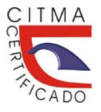Eficacia de cuatro fungicidas para control de Botrytis cinerea en el cultivo de Rosa sp
DOI:
https://doi.org/10.5281/zenodo.14765510Palabras clave:
cultivo de rosas, eficacia, fungicidas, moho gris, severidadResumen
Introducción: Ecuador estableció fincas con una gran variedad de especies de flores entre ellas las rosas (Rosa sp.), las cuales tienen agentes patógenos que las han afectado entre ellos Botrytis cinerea es una de las principales enfermedades que perjudican los cultivos, generando pérdidas importantes, de aquí radicó la necesidad de realizar esta investigación. Objetivo: evaluar la eficacia de cuatro fungicidas para el control del moho gris (Botrytis cinerea) en el cultivo de rosas (Rosa sp.). Método: los fungicidas utilizados en el experimento fueron: boscalid + cyprodinil 0.75 cc/l, boscalid 1 g/l, tiabenzol 0.70 cc/l y thiofanato 0.50 cc/l; el ensayo se realizó en cuatro camas de 32 m de largo por 0.75 m de ancho, un total de 15 unidades experimentales por repetición, la distribución de los tratamiento se hizo de forma aleatoria; para evaluar la eficacia de los fungicidas se calculó la varianza (Anova). Resultado: la severidad, el primer tratamiento T1 boscalid+cyprodinil mostró un índice de efectividad de 0.36, el segundo tratamiento T2 boscalid evidenció un índice de efectividad de 0.36 y el tercer tratamiento T3 tiabendazol y thiofanato metil mostró un valor de 0.29; por otro lado la incidencia y eficacia en el T1 resultó con 0.37, el T2 con 0.18 y el T3 se registró con un valor de 0.35, reportando un comportamiento significativo en la reducción de la incidencia y mejorando su nivel de eficacia con el primer tratamiento T1 boscalid+cyprodinil el tercer tratamiento T3 tiabendazol y thiofanato metil. Conclusión: boscalid + cyprodinil y tiabendazol y thiofanato metil evidenciaron ser fungicidas efectivos y eficaces en el control y mitigación de Botrytis cinerea en el cultivo de rosas, reportando los valores más significativos en el experimento.
Descargas
Citas
Adama, (2021). Adama. (Pilarcanil, Productor). Agroquímicos, fungicida, Pilarcanil. Hidalgo México.
Agrimportec, (2024). Productos, fungicida para el cultivo de rosa, papa y cacao. Ambato Ecuador.Agrimportec. (2024). Agrimportec. (C. WG, Productor). https://agrimportec.com/productos/fungicida-para-el-cultivo-de-rosa-papa-y-cacao/
Aldas, D. (2023). Caracterización de los cultivos de flores permanentes en función a los recursos utilizados en la producción agrícola durante la pandemia COVID-19 en el Ecuador. [Tesis de pregrado, Universidad Tecnica de Ambato], Repositorio UTA. https://repositorio.uta.edu.ec:8443/handle/123456789/37768
Amaya, E. (2021). Control de botrytis (Botrytis cinerea), con fungicidas en pos cosecha de rosas, en la empresa Royal Flowers-Mulaló. [Tesis de maestría, Universidad Tecnica de Cotopaxi], Repositorio UTC. https://repositorio.utc.edu.ec/items/89322dd8-7449-4bba-bac9-1dbf357b2d0c
Barón, F. (2018). Evaluación del efecto de la apliación en postcosecha del fungicida Pyraclostrobin sobre la vida en flores de la rosa (Rosa sp) variedad vendela. Universidad nacional de Colombia, Bogotá, Colombia. https://repositorio.unal.edu.co/bitstream/handle/unal/69659/FelixAlexanderBaronGamboa.2018.pdf
Basf , W. (2024). Basf we create chemistry. Obtenido de Basf we create chemistry: https://agricultura.basf.com/cules/proteccion-de-cultivos-y-semillas/productos/cantus-wg
Basicfarm. (27 de agosto de 2020). Basicfarm. (Basicfarm, Productor). https://basicfarm.com/blog/que-es-fungicida-utilidad/
Cao, X., Hui, J., Liu, X., Dan, L., Sui, M., Jie, W., … Zhao, Z. (2019). A detached petal disc assay and virus-induced gene silencing facilitate the study of Botrytis cinerea resistance in rose flowers. Horticulture Research, 6(1), 6. https://doi.org/10.1038/s41438-019-0219-2
Díaz, D. (2022). Comercialización de rosas (Rosa sp)cen el mercado de exportación Ecuatoriano. [Tesis de pregrado, Universidad Técnica de Babahoyo], Repositorio UTB. http://dspace.utb.edu.ec/handle/49000/13621
Edifarm. (2021). Edifarm. (Mertect, Productor). https://gestion.edifarm.com.ec/edifarm_quieckagro/pdfs/productos/mertect%20500-20211210-093248.pdf
Edifarm. (2024). Edifarm. https://gestion.edifarm.com.ec/edifarm_quieckagro/pdfs/productos/NOVAK700%20NOVAK500-20191024-124304.pdf
Edifarm. (2024). Edifarm. (C. WG, Productor). https://gestion.edifarm.com.ec/edifarm_quiekagro/pdfs/productos/CANTUS%20WG-20181109-104557.pdf
Escobar, P. (15 de octubre de 2024). Índice de severidad por niveles. Síntomas en el botón floral. (R. X. Castellano Cañizares, Entrevistador).
Exiagrícola;. (2024). Exiagrícola. (Mertect, Productor). https://exiagricola.net/tienda/producto/mertect-x-litro/
Farmex. (20 de enero de 2020). Farmex. (N. 50WP, Productor). www.farmex.com.pe/uploads/productos/ft/ft/fungicida/novak-50-wp-ft-v2.pdf
Fundación agrícola. (2022). Merterct 500 sc, ficha técnica. Syngenta Crop Protectión S.A. Sucursal Perú, 7. https://www.tqc.com.pe/wp-content/uploads/2020/04/FICHA-TECNICA-MERTECT-500-SC.pdf
García, P. (2021). Evaluación de cuatro biofungicidas y dos cepas del género Trichoderma contra el moho gris en rosas. Agronomía & Ambiente, 41(1), 1-12. http://agronomiayambiente.agro.uba.ar/index.php/AyA/article/view/162
Matute, P. (2019). Control biológico del moho gris (Botrytis cinerea) en cultivos de fresa (Fragaria vesca L) mediante hongos filamentosos antagonistas. Universidad politecnica salesiana. https://dspace.ups.edu.ec/handle/123456789/18147
Río, P. del (2022). Análisis de las exportaciones de flores en el Ecuador 2007-2019. [Tesis de pregrado, Universidad de Azuay], Repositorio UDA. https://dspace.uazuay.edu.ec/bitstream/datos/12325/1/17852_espa%C3%B1ol.pdf
Zapata, Y., Diaz, A. y Beltrán , C. (2023). Alternatives for the gray mold (Botrytis cinerea) control in cape gooseberry (Physalis peruviana). Revista mexicana de fitopatología, 41(3), 372-390. https://doi.org/10.18781/r.mex.fit.2302-5
Publicado
Cómo citar
Número
Sección
Licencia
Derechos de autor 2025 Universidad & ciencia

Esta obra está bajo una licencia internacional Creative Commons Atribución-NoComercial-CompartirIgual 4.0.





















